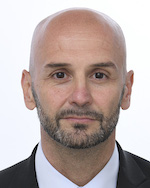
Italy’s Nuclear Reawakening
Europe is facing a new energy reality. The war in Ukraine, global supply shocks, and the weaponisation of energy have exposed just how fragile our dependence on external sources has become. At the same time, Europe is pushing hard to cut emissions while keeping its industries alive and competitive, a balance that’s proving harder to strike than expected. Yet while renewable energy continues to expand, it remains intermittent and insufficient on its own to meet the demands of a modern, electrified economy. The continent must now ask itself a difficult but necessary question: how do we guarantee clean, reliable, and sovereign energy in a world that is anything but stable? For a growing number of member states, the answer is becoming clear: nuclear energy must be part of the solution.
In Italy, my country, this shift is particularly significant. For years, nuclear power was politically untouchable, frozen by two referendums that reflected a very different historical context. But today, the picture has changed. Energy security is no longer abstract; it is urgent.
And the technology behind nuclear generation has evolved beyond recognition. Acknowledging this new reality, the government led by Giorgia Meloni has made the bold and necessary decision to reintegrate nuclear energy into our future planning.
This is not a symbolic gesture but a deliberate and strategic move. A draft law currently under consideration in the Italian Chamber of Deputies lays out the legal and regulatory framework for a nuclear return. This progress opens the door to new-generation reactors, such as Accelerator-Driven Subcritical Reactors (ADSRs) and small modular reactors (SMRs), while also reinforcing support for advanced research. At the European level, our recent accession to the Nuclear Alliance affirms our commitment to play a leading role in the continent’s energy transition. We are also taking on a coordinating role in fusion research, a testament to both technical capability and renewed political purpose.
What’s being proposed today builds on a foundation of deep expertise. In the 1960s and 70s, Italy ranked among the global leaders in nuclear capacity. The Caorso Nuclear Power Plant — one of the most powerful in Europe at the time — was built and brought online in just over eight years, a remarkable achievement. Institutions like ENEA (the Italian National Agency for New Technologies, Energy and Sustainable Economic Development) played a key role in advancing safe and innovative nuclear technologies. That knowledge base has endured. Today, with clear direction and renewed investment, we are reactivating it. A new generation is being trained, and the expertise of the past is being aligned with the challenges of the future.
This revival comes at a pivotal moment for Europe’s industrial policy.
The EU is right to focus on reindustrialisation, but without sufficient, reliable energy for key sectors like steel, chemicals, and manufacturing, those efforts risk falling short. Nuclear can bridge the gap that renewables alone cannot fill.
It offers dependable, low-emission baseload power, ensuring grid stability and economic competitiveness.
Recent decisions in Brussels mark real progress. After long debate, nuclear energy has finally been included in the EU’s Taxonomy for sustainable investments. This opens the door to financing, innovation, and pan-European cooperation. It is more than a regulatory shift; it is a validation of common sense and of the approach we in the European Conservatives and Reformists (ECR) Group have defended for years — one grounded in technological openness, scientific integrity, and strategic foresight.
Looking beyond fission, we cannot ignore the promise of fusion. Once seen as a distant dream, fusion is now steadily moving toward practical application, here too, agencies such as ENEA are playing a central role.
From Italy’s participation in the international ITER project to private-sector initiatives like Eni’s partnership with MIT, the country is deeply engaged in advancing fusion. Earlier this year, I hosted a dedicated event in the European Parliament on the state of fusion.
The message from experts was clear: this is no longer a question of “if,” but “when.” We must be ready — and we are.
Public opinion, understandably, still carries the weight of past experiences. The fears of earlier decades were never irrational. But it is now our responsibility to explain how much has changed. Today’s reactors are fundamentally different. Safety protocols, waste management, and transparency standards have advanced significantly. Building trust means listening carefully and communicating clearly what nuclear energy really represents — not as a memory of the past, but as a necessity for the future.
For the ECR Group, this moment affirms a long-standing commitment. We have always defended a pragmatic and secure energy strategy, one that balances environmental goals with industrial needs. Europe must be able to innovate, produce, and lead — not rely on others for the energy it requires to stay competitive.




